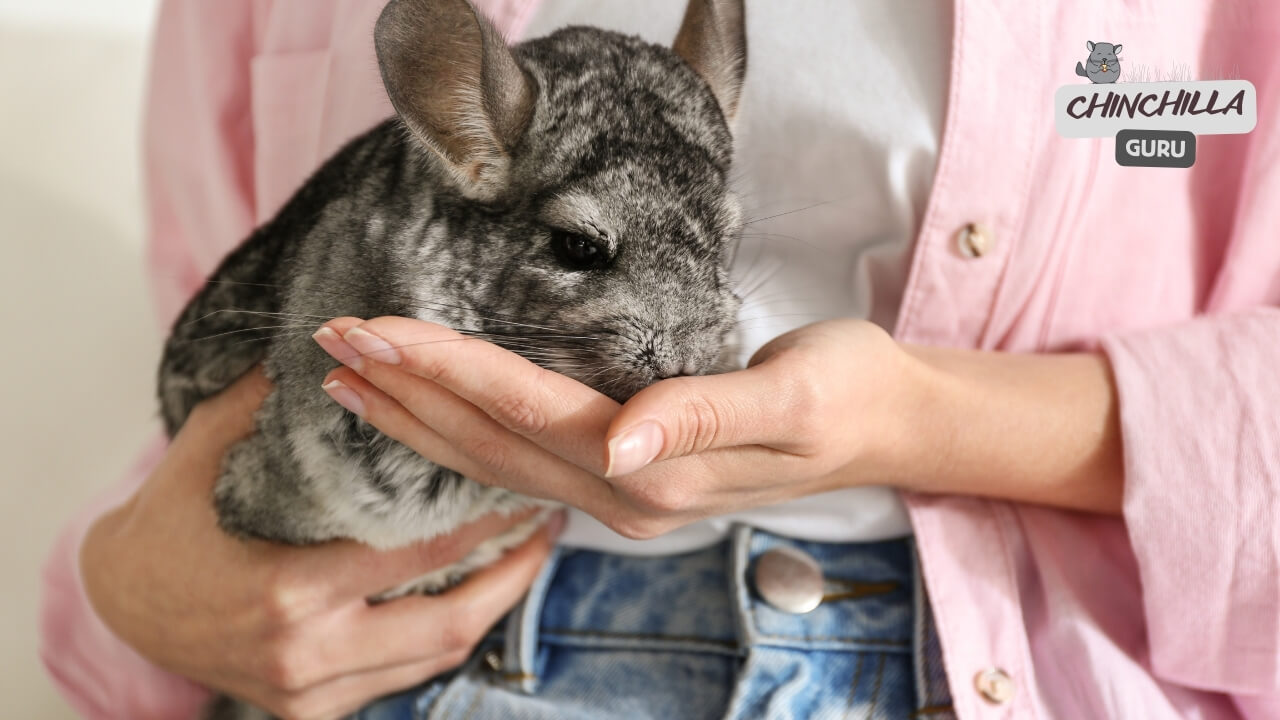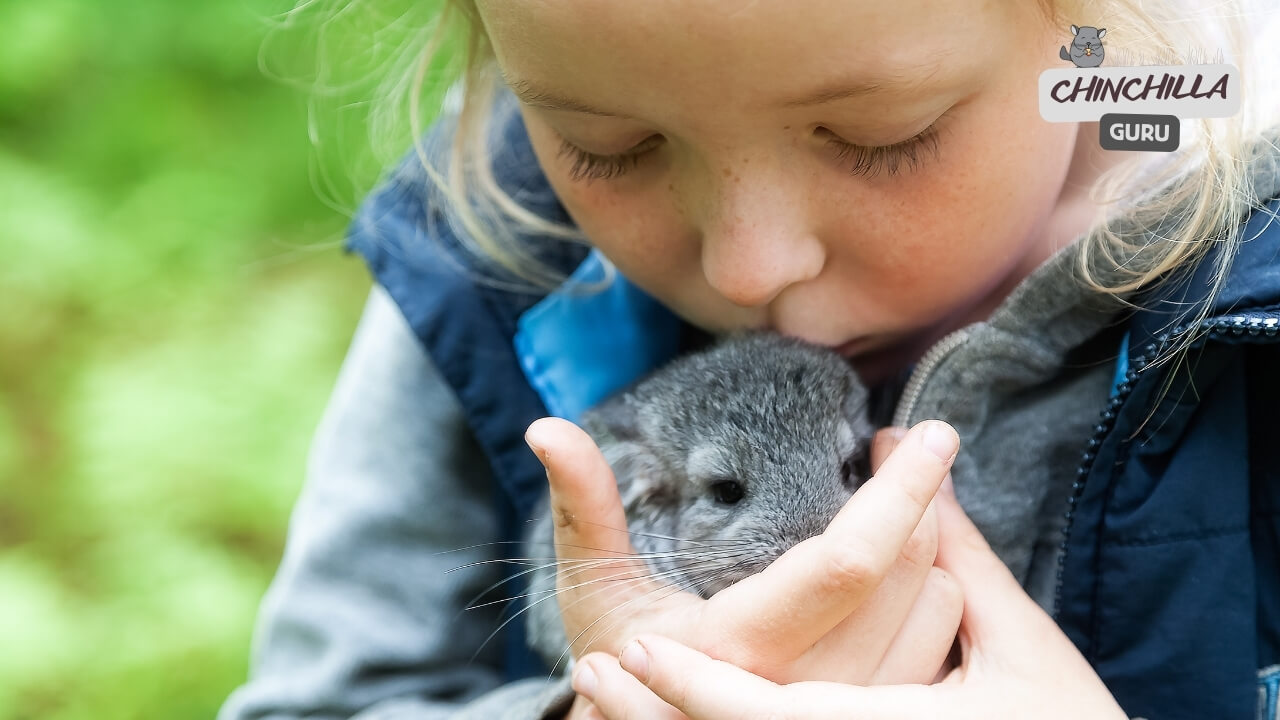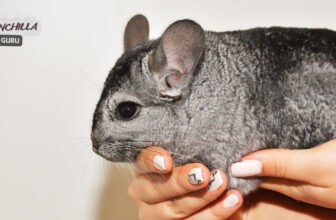
I have been fortunate enough to share my life with two lovely female chinchillas named Pixie and Trixie. Throughout my experience with these adorable creatures, I’ve learned a lot about how to hold a chinchilla safely and ensure their well-being.
In this post, I will share my personal experiences and provide you with all the information you need to safely hold a chinchilla.
Understanding Chinchilla Behavior
Each chinchilla is different and has its own personality. They naturally are more shy and wary than hamsters, cats, and other small pets. If you want to have a good relationship with your furry friends, you need to understand how they act.
Like Pixie and Trixie, chinchillas are hunters in the wild. As a way to stay alive, they stay alert and are ready to run away from possible dangers.
Therefore, chinchillas might find it hard to feel safe and comfortable when we hold them.
You can help your chinchilla feel more at ease during bonding sessions, though. It just takes time, care, and the right way to handle it.

Can You Hold a Chinchilla?
Chinchillas are sensitive pets that might not like being cuddled as much as other pets. They are naturally cautious due to their prey instincts and may become scared or stressed when held.
Read more: Are Chinchillas affectionate?
Some chinchillas have learned ways to protect themselves, like “fur slip”, which is when they lose parts of fur to get away from danger. If they get bitten, they can even lose their tails, which will never grow back.
So why don’t chinchillas like to be held?
Naturally, chinchillas are wary of being handled, and this has made them cautious over time. They are prey animals in the wild, so getting picked up by an attacker would put them in danger.
The right thing to do as pet owners is to accept and honour their natural tendencies.
Therefore, it is crucial to handle chinchillas gently and provide them with a sense of security during interactions.
How to Pick Up a Chinchilla
To avoid scaring or hurting a chinchilla when you pick it up, you need to be very gentle. And remember to make sure that your chinchilla likes you before the interaction.
Here is how you can safely pick up a chinchilla:
- Get your hands clean: Use light soap to wash your hands well before touching your chinchilla. This will help keep dirt or smells from being transferred, which could bother or scare your pet.
- Approach slowly: Chinchillas can be skittish, so it’s important to approach them slowly and calmly. Sudden movements may startle them and make them less likely to trust you.
- With one hand, slide it under or around the chinchilla’s chest: This is how you pick them up. Keep their body supported with your hand, but don’t squeeze them too hard.
- Lift and support their hind legs: Use your other hand to lift and support your chinchilla’s hind legs. For them, this will make them feel safe and keep them from being unsteady.
- Hold them close: Once you pick up your chinchilla, keep it close to your body to make it feel safe and warm. Avoid any sudden moves that may startle or disturb them.
- Hold them straight up: Because chinchilla spines are so delicate, it’s important to hold them straight up. This will help keep their back safe and keep them from getting hurt.

Remember that you should be gentle and respectful when you touch a chinchilla. If your chinchilla seems upset or painful, it’s best to give them some space and try again later.
Handling and Holding Techniques for Chinchillas
Different chinchillas may have varying personalities and preferences when it comes to handling and holding.
It’s important to find a handling technique that works best for your chinchilla. Here are a few techniques you can try on how to handle a chinchilla:
#1. Tail and Scoop Method
This method involves holding the base of your chinchilla’s tail with one hand while using your other hand to support their body.
Placing one hand under their chest area and lifting gently can provide additional support. This technique is considered safe and provides a sense of security for your chinchilla.
#2. Tail Only Method
You should use the tail-only method primarily when your chinchilla is being transported or needs minimal restraint. It involves firmly grasping the base of the tail, making sure not to pinch or move too quickly.
This method is useful when grooming or for quick inspections, but not to be used for extended periods.
#3. Towel Wrap Method
Wrapping your chinchilla in a lightweight towel or fleece blanket can help immobilize them for specific purposes such as administering medication or performing health checks.
Make sure the wrap is not too tight to avoid restricting their breathing but secure enough to prevent them from escaping.
#4. Restraint Techniques
There may be situations where you need to restrain your chinchilla, such as for medical reasons or grooming.
Using a combination of tail base grip and gently holding their ears can provide extra control. However, it’s crucial to handle them with care and avoid putting excessive pressure on their delicate bodies.
Remember to always be patient and observe your chinchilla’s reactions during handling. If they show signs of distress or discomfort, such as biting or struggling excessively, it’s essential to respect their boundaries and find alternative methods of interaction.
Frequently Asked Questions (FAQs)
Can you hold a chinchilla by the tail?
You can gently hold by the base of your chinchilla’s tail, but not the center and tip of it. The tail is not a suitable area for gripping or lifting them. Chinchillas have delicate tails, and excessive handling in this manner can cause harm or distress.
Can I hold multiple chinchillas at once?
It’s not a good idea to hold more than one chinchilla at once because they could get hurt or run away. People say that chinchillas are very quick, and they may use each other to help them jump or get away from you. It’s best to handle each chinchilla individually to ensure their safety and prevent any unnecessary stress.
How should I handle a sick or injured chinchilla?
Handling a sick or injured chinchilla requires extra caution and care. It is best to minimize handling unless necessary for veterinary care or treatment. Avoid causing additional stress or injury, and consult a veterinarian for proper guidance.
How often should I handle my chinchilla?
The frequency of handling will vary depending on your chinchilla’s personality and preferences. It’s essential to respect their boundaries and monitor their stress levels. Some chinchillas may enjoy daily interactions, while others may prefer more limited handling.
Conclusion
Holding a chinchilla requires patience, gentle handling, and respect for their unique needs and preferences.
By following the proper techniques, being consistent, and creating a positive experience for your chinchilla, you can establish a trusting relationship and enjoy moments of safe interaction.
Remember to always prioritize your chinchilla’s well-being and comfort throughout the handling process.
I hope you find this guide helpful in learning how to hold a chinchilla safely and comfortably. Enjoy your time with your furry friends and cherish the moments of trust and bond that you build.




